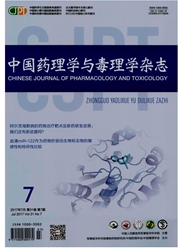

 中文摘要:
中文摘要:
G蛋白偶联受体(GPCR),又称为7-α螺旋跨膜蛋白受体,是己知的3类涉及跨膜信号转导的膜受体之一。GPCR与G蛋白结合产生生物学效应,对机体生理功能和病理过程有广泛的调控作用。大量研究表明,GPCR通过调节下游某些信号的转导途径影响肝癌细胞的增殖、侵袭和转移过程,参与肝细胞癌(HCC)的发生和发展。本文就趋化因子受体、前列腺素受体、肾上腺素受体和血管紧张素受体等GPCR及其相关的信号通路在HCC发生发展进程中的作用进行综述,并对靶向GPCR的HCC治疗前景予以展望。
 英文摘要:
英文摘要:
G protein-coupled receptors (GPCRs), also known as seven-transmembrane domain receptors, constitute the largest superfamily of cell surface receptors. By coupling to heterotrirneric G proteins, arrestins and other signaling molecules, GPCRs modulate diverse signal transduction pathways under physiological and pathological conditions. Recent studies have revealed crucial roles of GPCRs in tumorigenesis and development of cancer metastasis. This review summarizes roles of GPCRs, particularly the roles of those coupled to chemokines, prostaglandin, lysophosphatidic acid, endothelin, catecholamine and angiotensin in proliferation, invasion, metastasis and angiogenesis of hepatoma cells and development of hepatocellular carcinoma. The potential of GPCRs-based therapeutics being used for hepatocellular carcinoma is also highlighted.
 同期刊论文项目
同期刊论文项目
 同项目期刊论文
同项目期刊论文
 期刊信息
期刊信息
